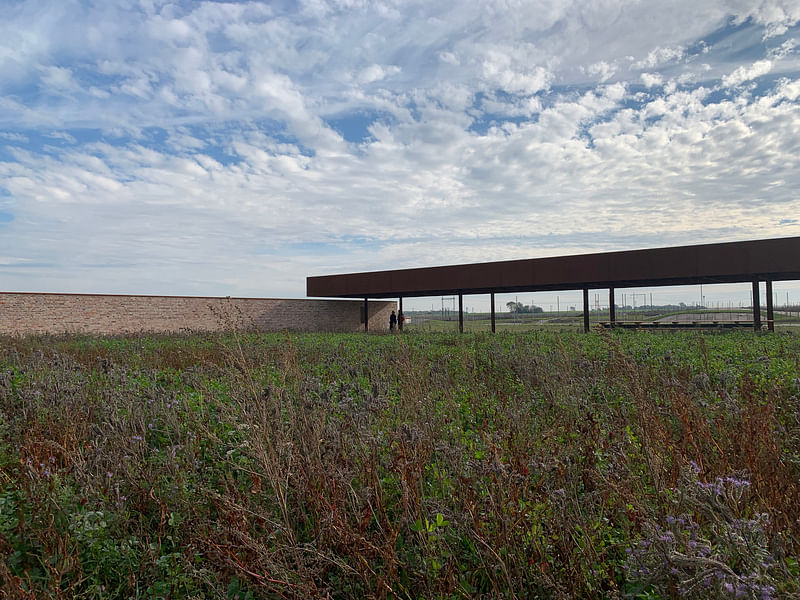European Prize for Urban Public Space reveals five finalists for 2022
By Josh Niland|
Tuesday, Jul 26, 2022

Related
The biennial European Prize for Urban Public Space has announced its list of 2022 finalists featuring a total of five projects that beat out a record 326 entries from 35 different countries in what is now the competition’s 11th edition.
Each project was completed between 2018 and last year. Winners will be announced during a ceremony to be held on November 14h and 15th at The Center of Contemporary Culture of Barcelona (CCCB).
"The Prize, which is honorific, has several distinguishing features," the CCCB noted in its announcement. "First, it is conceded to both the architect and the council, the branch of public administration or promoter which is responsible for bringing about the intervention. Second, the Prize does not single out — at least exclusively or as a priority — large-scale urban planning interventions but is also attentive to great or small of what might be called urban surgery which aim, above all, to improve the life of citizens. Third, the Prize is distinctive in its European focus. Preserving and highlighting local particularities, it is concerned to pay tribute to the shared features of urban planning interventions all around Europe in order to defend and promote a certain European idea of city."
This year’s jury was composed of critic Hans Ibelings, ETH Zurich landscape professor Teresa Galí-Izard, Athens-based resiliency advisor Eleni Myrivili, Assemble, London founder Paloma Strelitz, Slovenian architect Špela Videčnik, Swiss Architecture Museum director Andreas Ruby, and Universitat Politècnica de Catalunya (UPC) lecturer Lluís Ortega, who served as Secretary of the Prize.
A group of 20 selected works was archived as well. Scroll down to read a description of each of the five finalist designs.
FLOW in Brussels, Belgium by Jozef Wouters for POOL IS COOL (2021)

Description: "Flow, designed and built with the participation of fifty young people, is the first open-air swimming pool to be constructed in Brussels in forty years. This project introduces a temporary structure that establishes a rich meeting place for enjoying fresh air and water. As a simple, economical, modular system that can easily be built by many hands, it presents a good example of how everyone can participate in creating an active, healthy public space."

Description: "The restoration of the Catharijnesingel removes vehicular traffic that occupied this street and brings back water to rewild a new public space for the city and make it accessible for cyclists and pedestrians. This project is an excellent example of revitalising the qualities of the city by means of recovering water and its biodiversity. Inspired by the environment, all the elements, including trees, vegetation, paving materials, and street furniture have been meticulously selected and envisage how nature will evolve in future. It introduces a new, natural, and healthy microclimate that will play an important role in the present situation of global climate crisis."
(Cover image) Saint Sernin Square in Toulouse, France by Joan Busquets, Pieter-Jan Versluys, BAU (B - Arquitectura i urbanisme) for Toulouse Métropole (2020)

Description: "The project for Saint Sernin Square in Toulouse restores eminence to the historic urban fabric of the city. The cars that occupied its surface have been removed, and lost trees are reinstated as organisers of the public space. The simplicity of the proposal, its use of materials, and recognition of the heritage of the site have become the project’s mechanisms for reactivating a new, once-jeopardised public space and regaining its vertical dimension and establishing an area that can accommodate a range of public uses."
Urban community garden "Sporta pils dārzi" in Riga, Latvia by Artilērijas dārzi (2021)

Description: "The urban community garden 'Sporta pils dārzi' is the result of a popular initiative to recover an abandoned lot and becomes a new typology of public space. The project consists of a system of seedling distributions and interstitial spaces that will be occupied during events and encounters. The resulting project is a new system, a model of urban space that incorporates productive, cultural and social logics and integrates emerging natural elements as part of the community space."
Hage in Lund, Sweden by Price & Myers, Brendeland & Kristoffersen Architects for Lund Cathedral (2021)

Description: "Lund Cathedral decided to use its properties to develop a public space that would be an alternative to the logic of rapid urbanisation in its surroundings. A courtyard, closed on three sides by walls made of bricks recovered from a demolished factory building, is set in still-undeveloped land on the outskirts of Lund. The owner of the land has decided not to keep pace with the urbanising development of the area, but to let it follow its own course open to the citizens. The courtyard is a first intervention, an anticipation of a gradual evolution of the place: an hortus inconclusus."

RELATED NEWS 2018 European Prize for Urban Public Space awarded to 51N4E's Skanderbeg Square renovation in Tirana

RELATED NEWS Results of the 2014 European Prize for Urban Public Space


Share
0 Comments
Comment as :